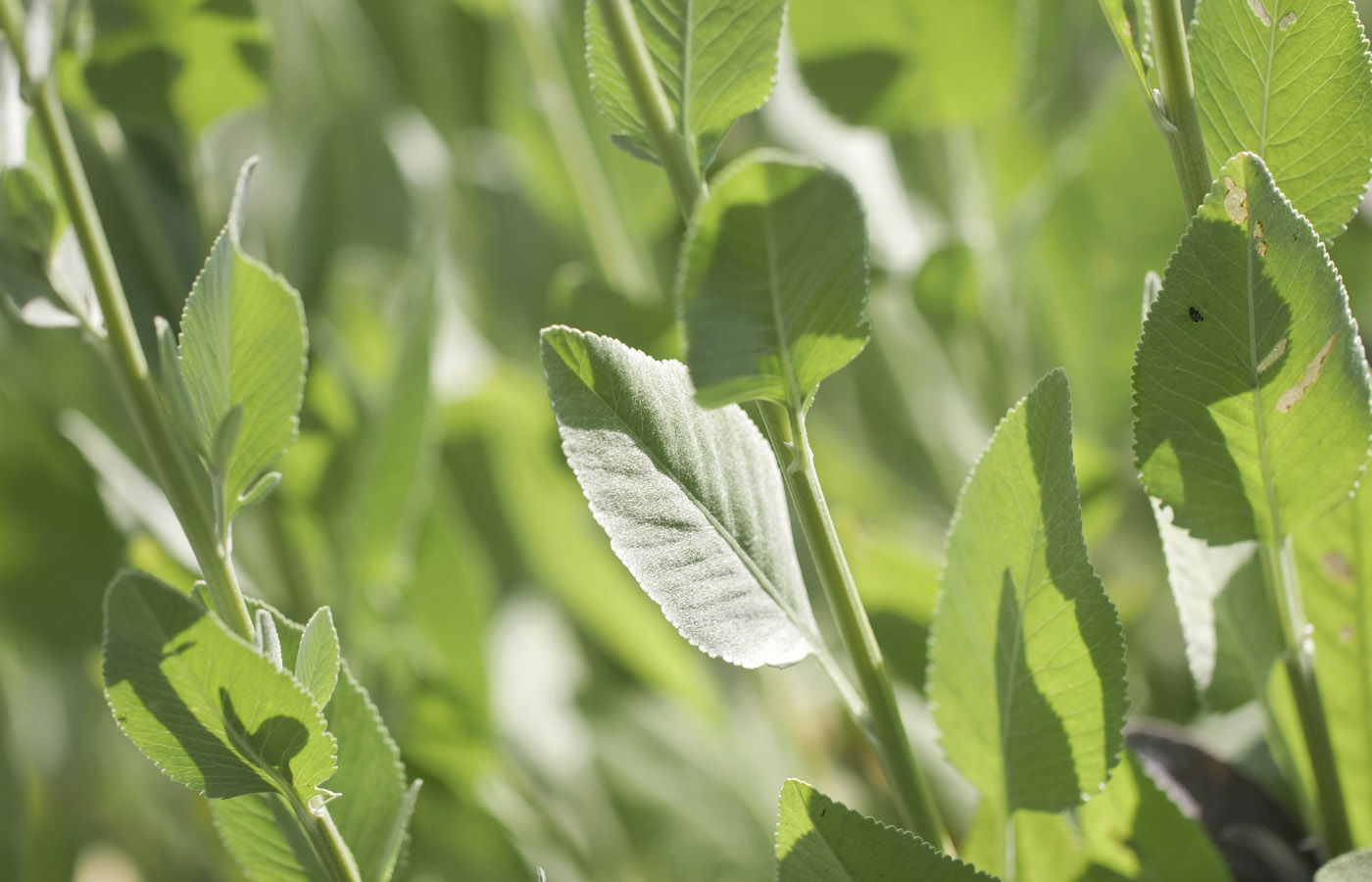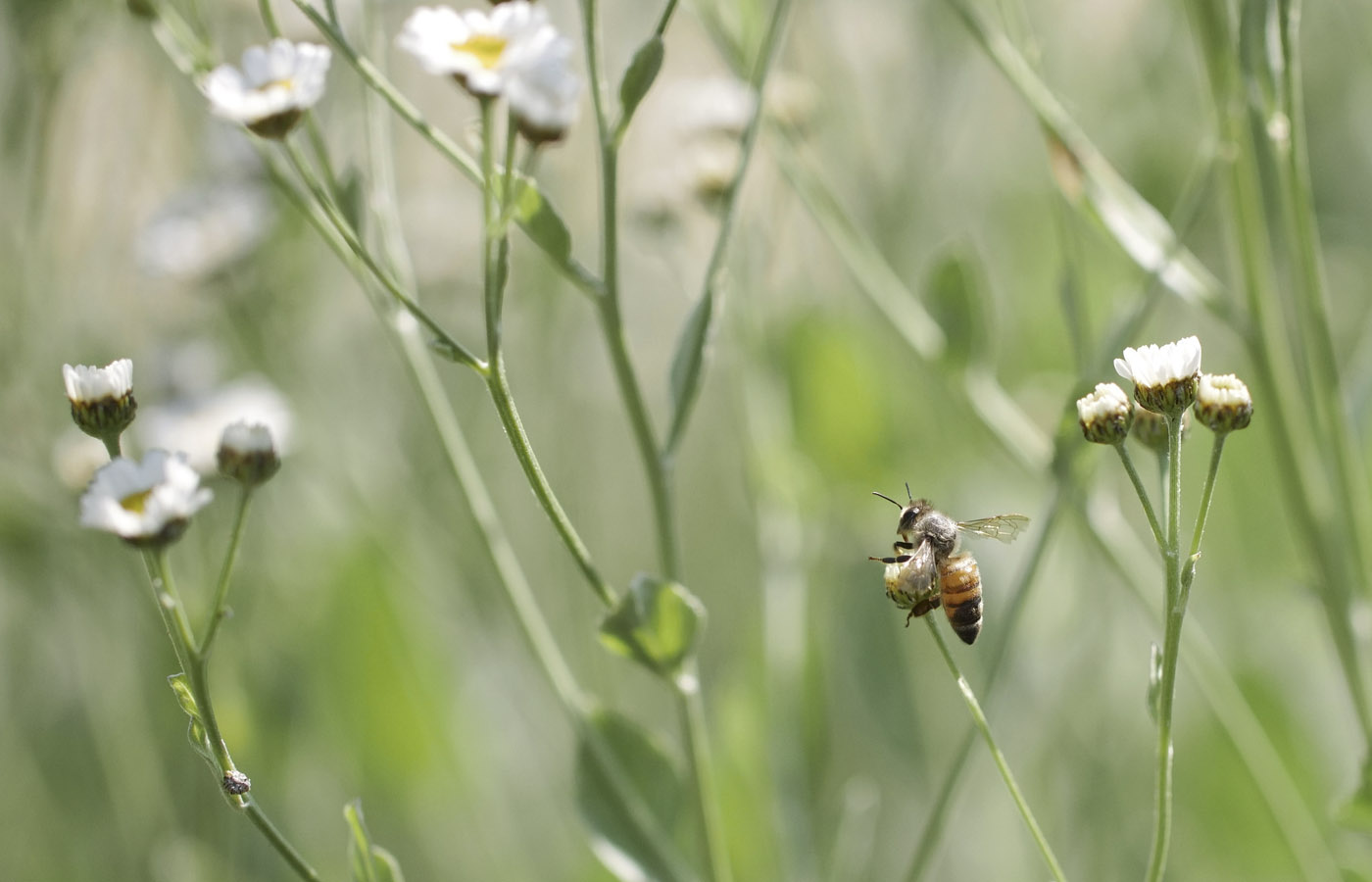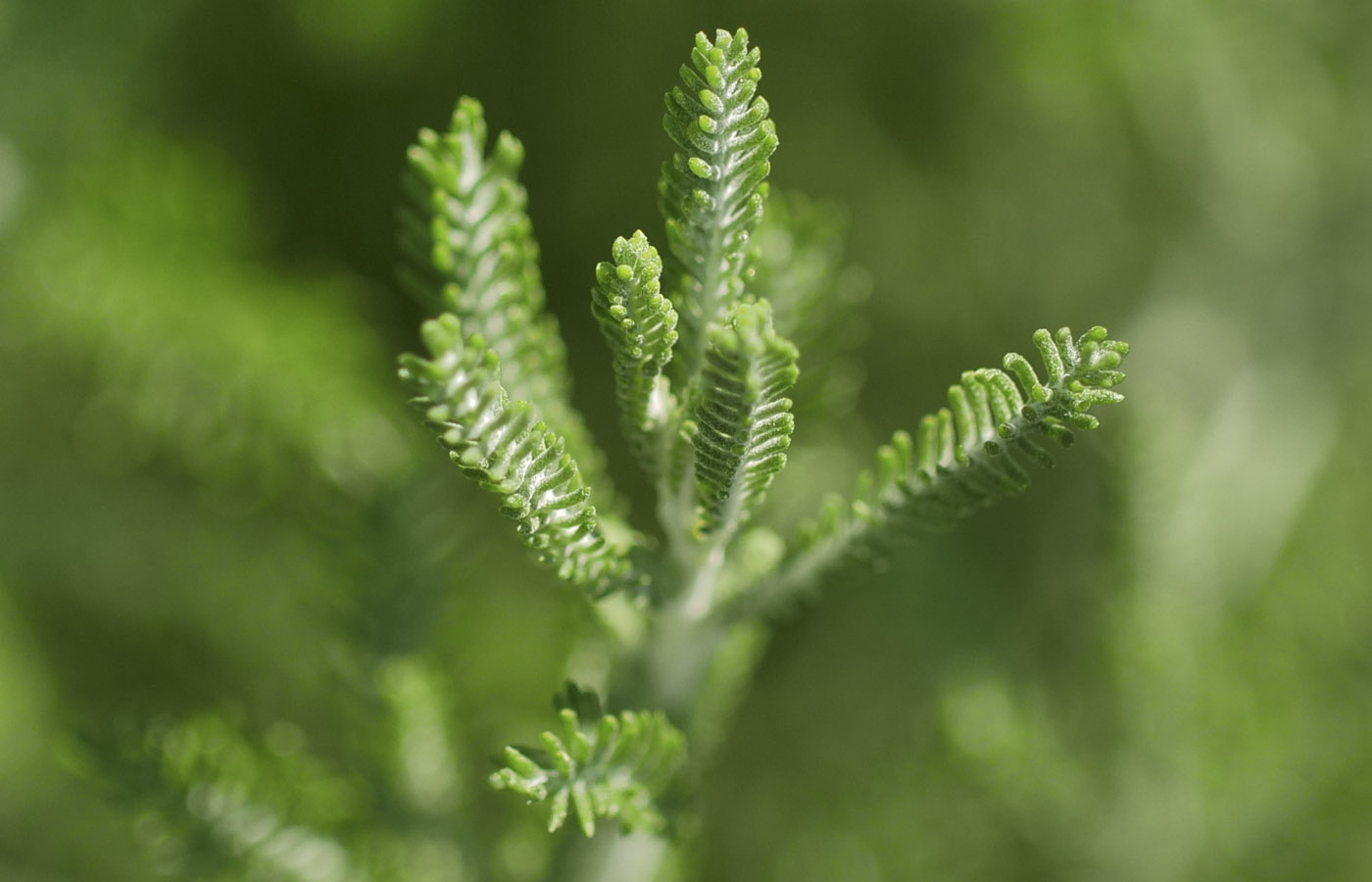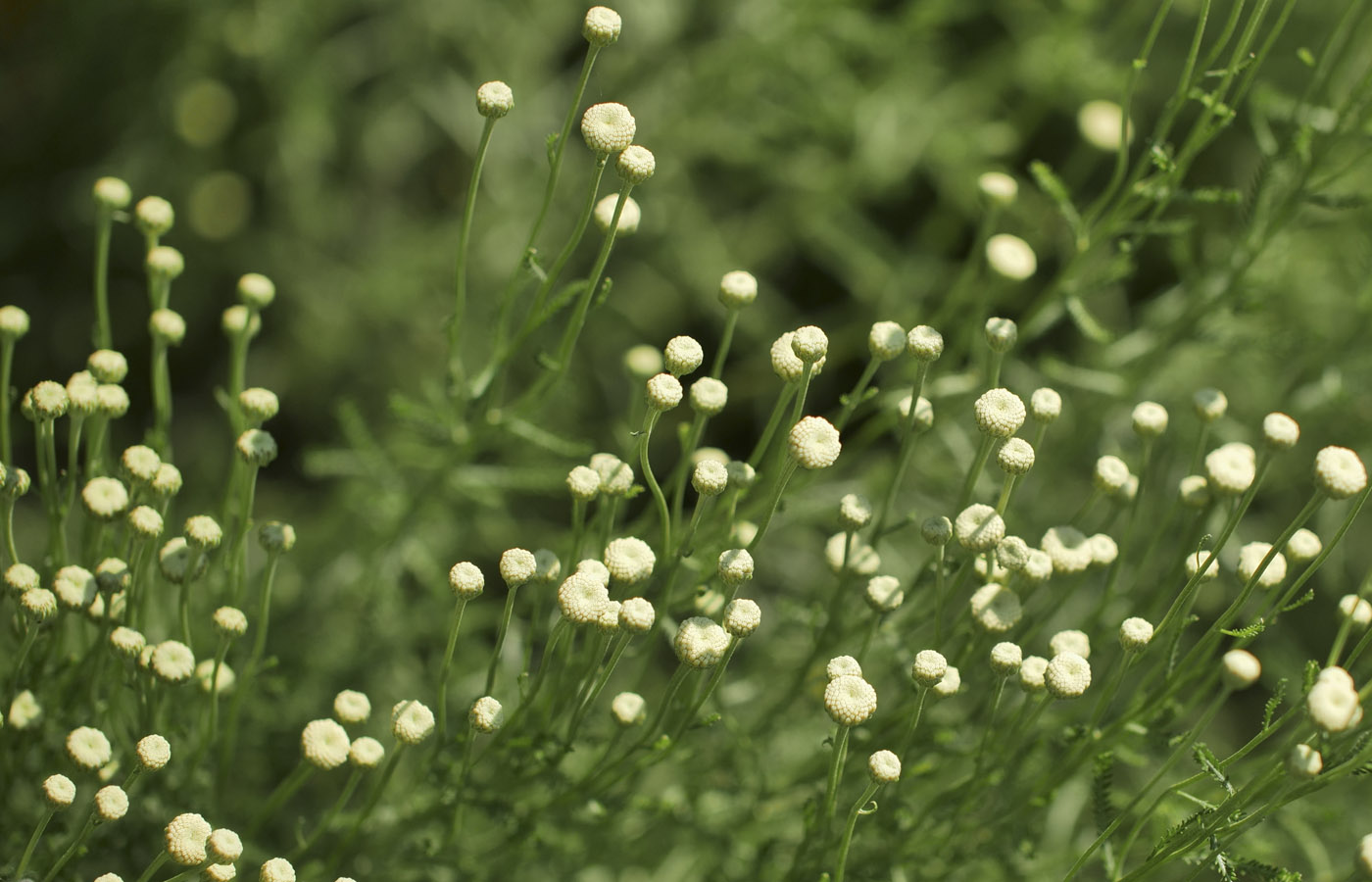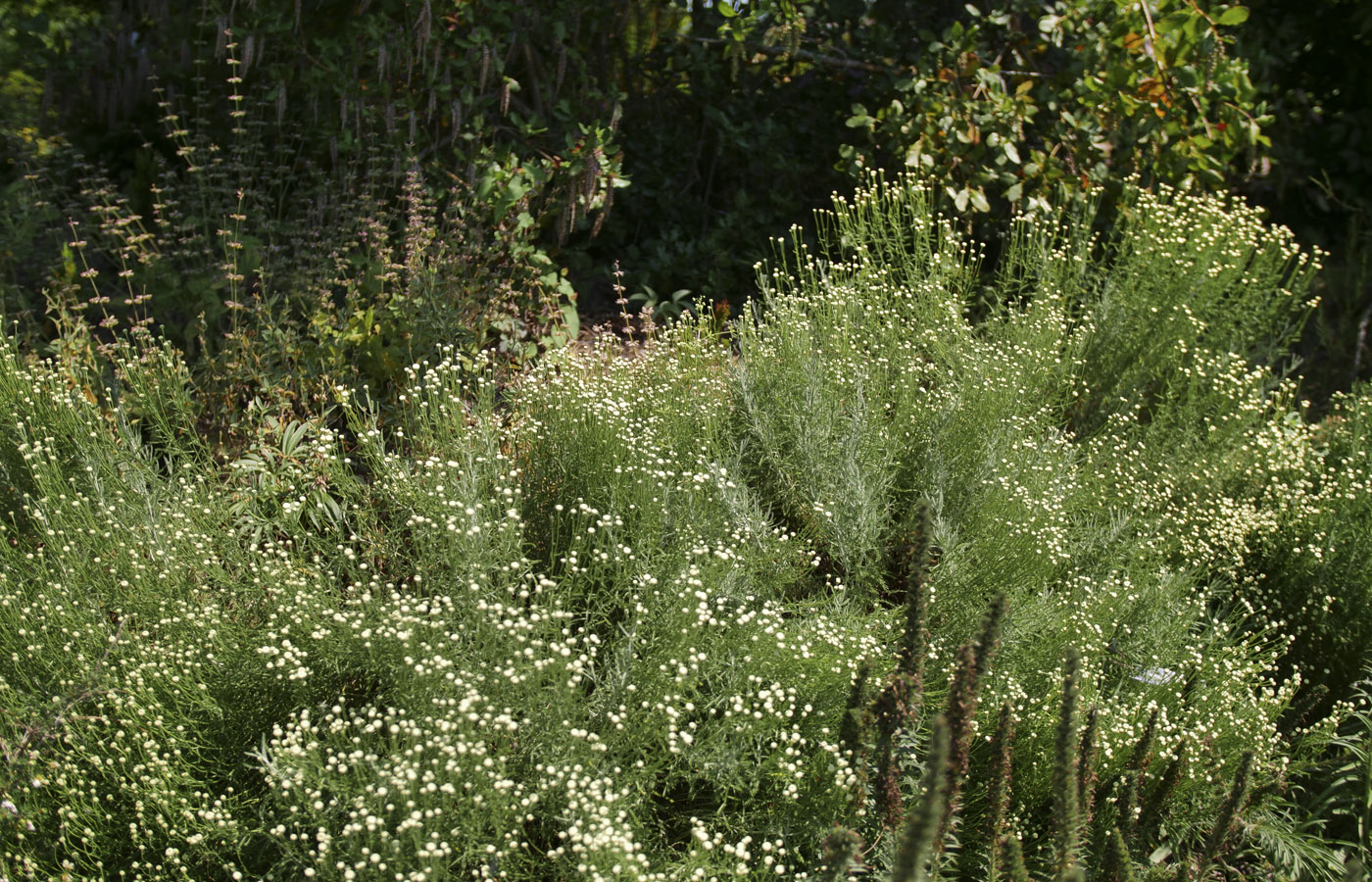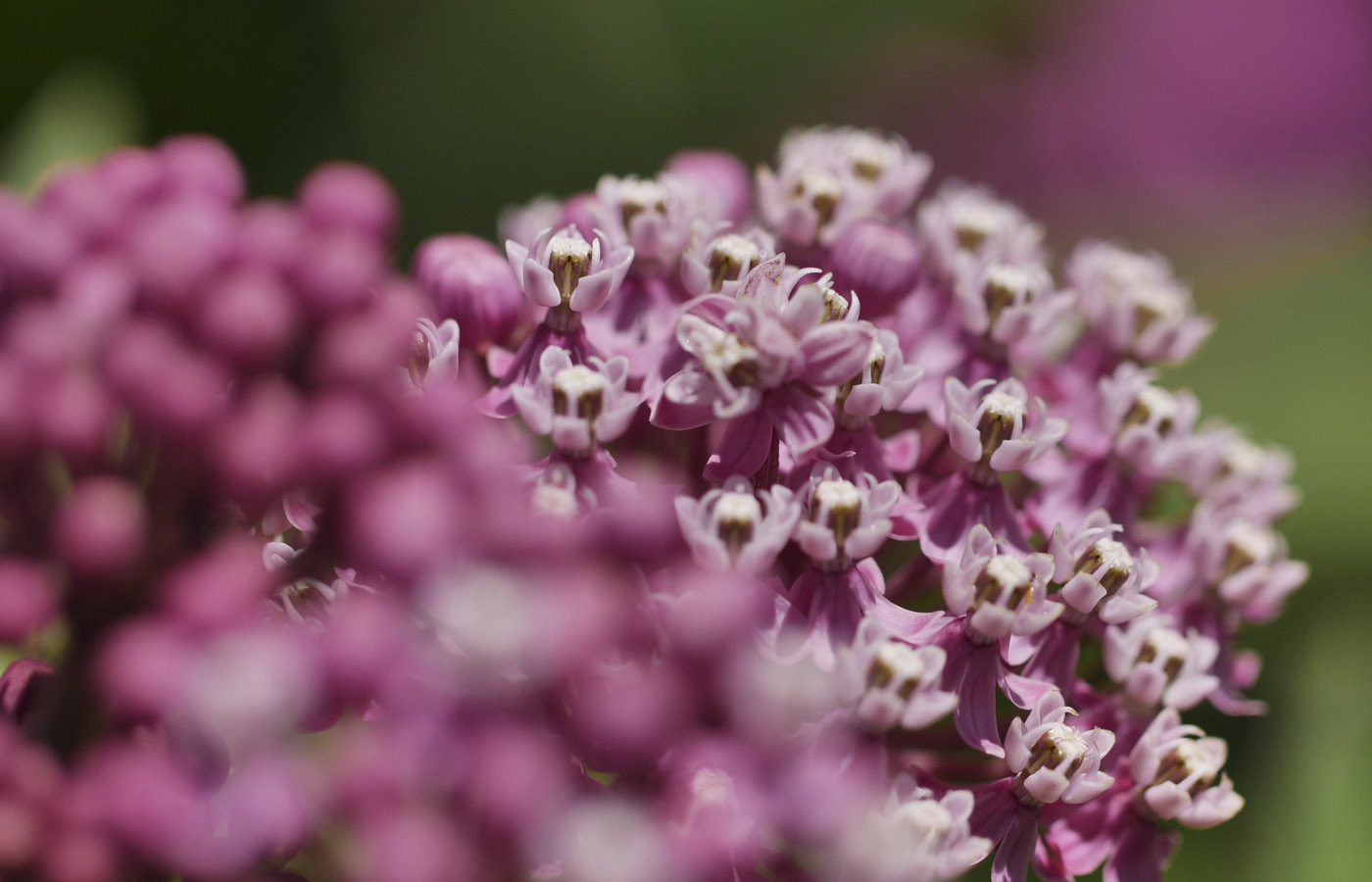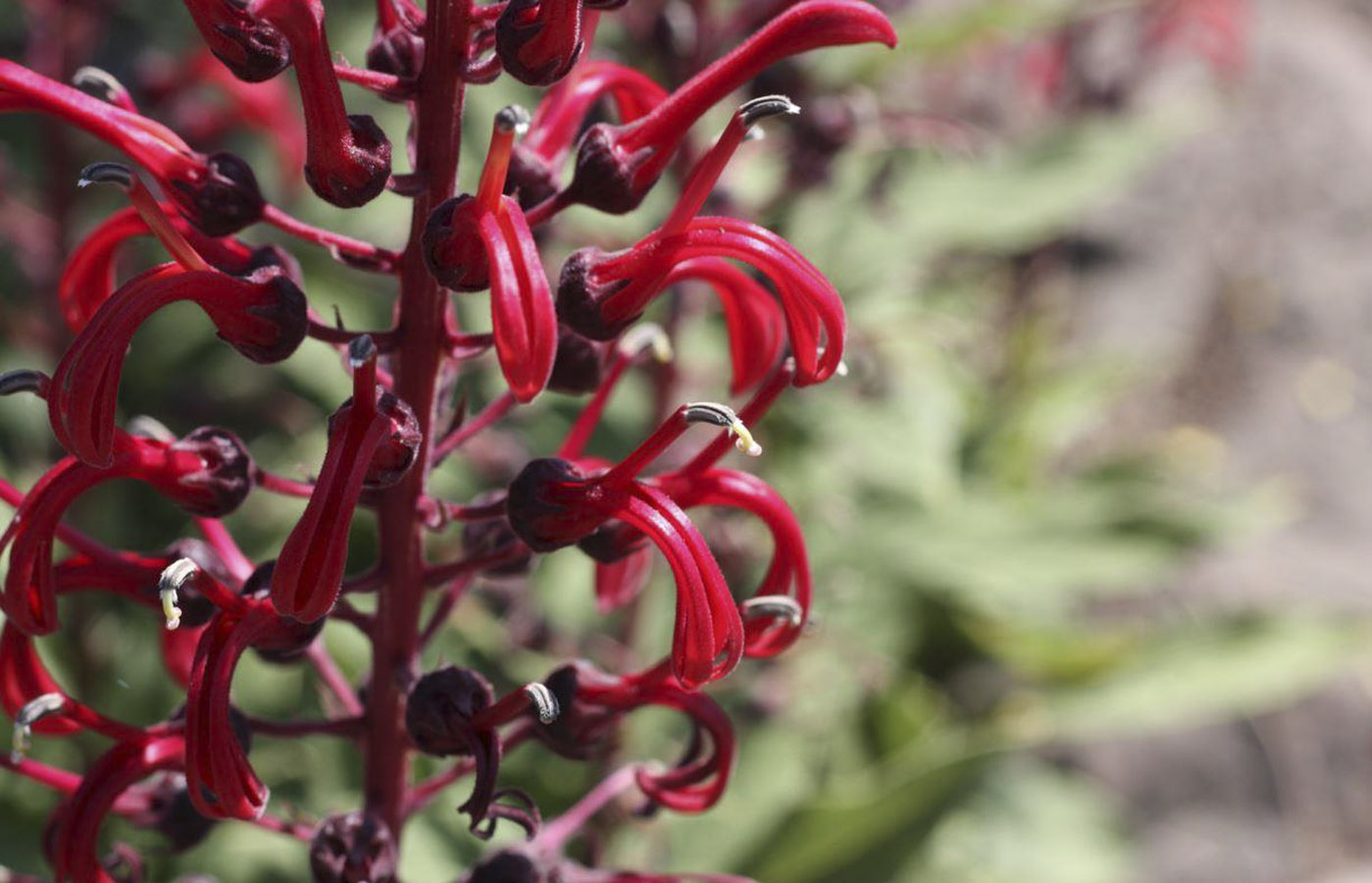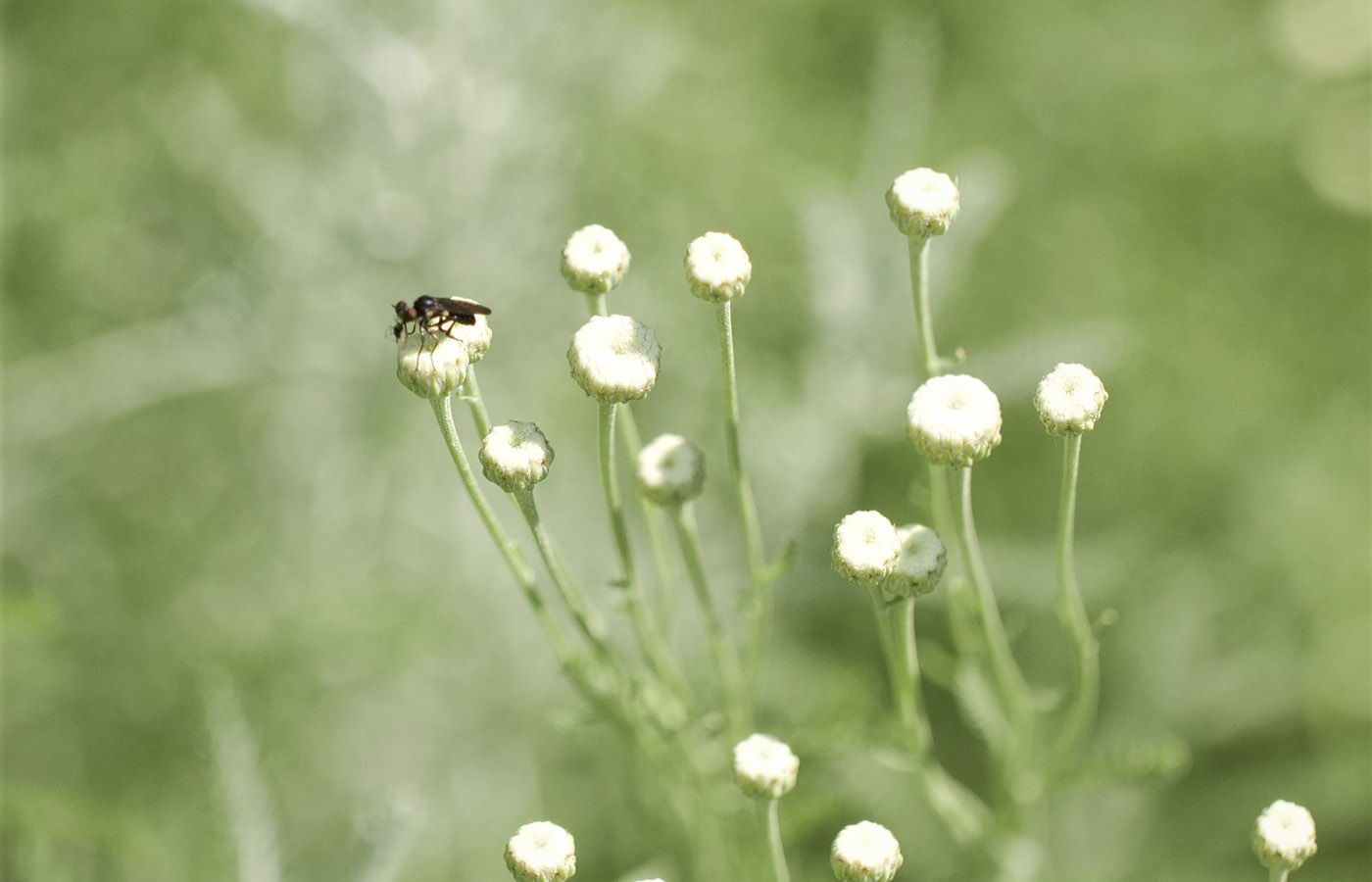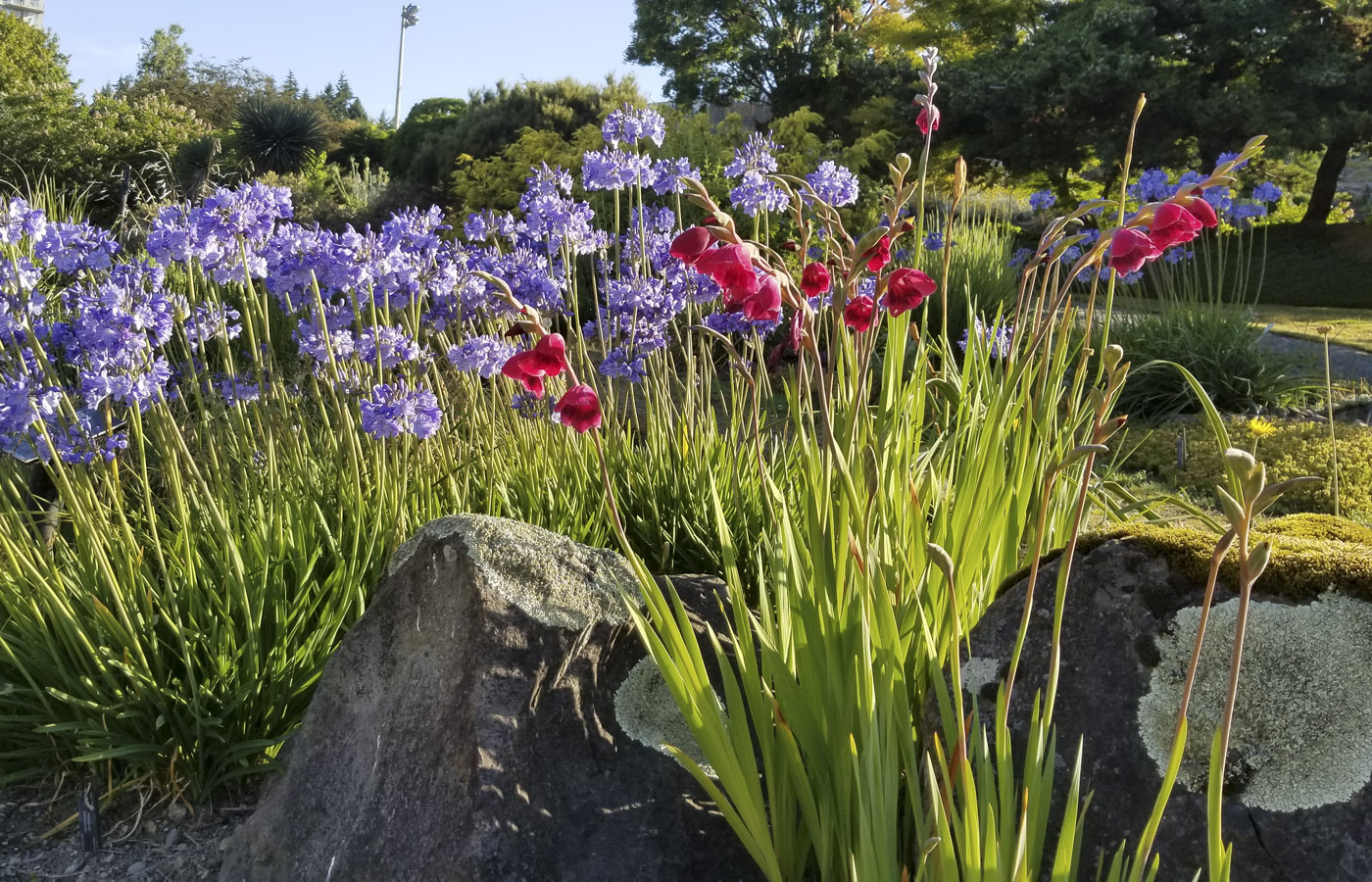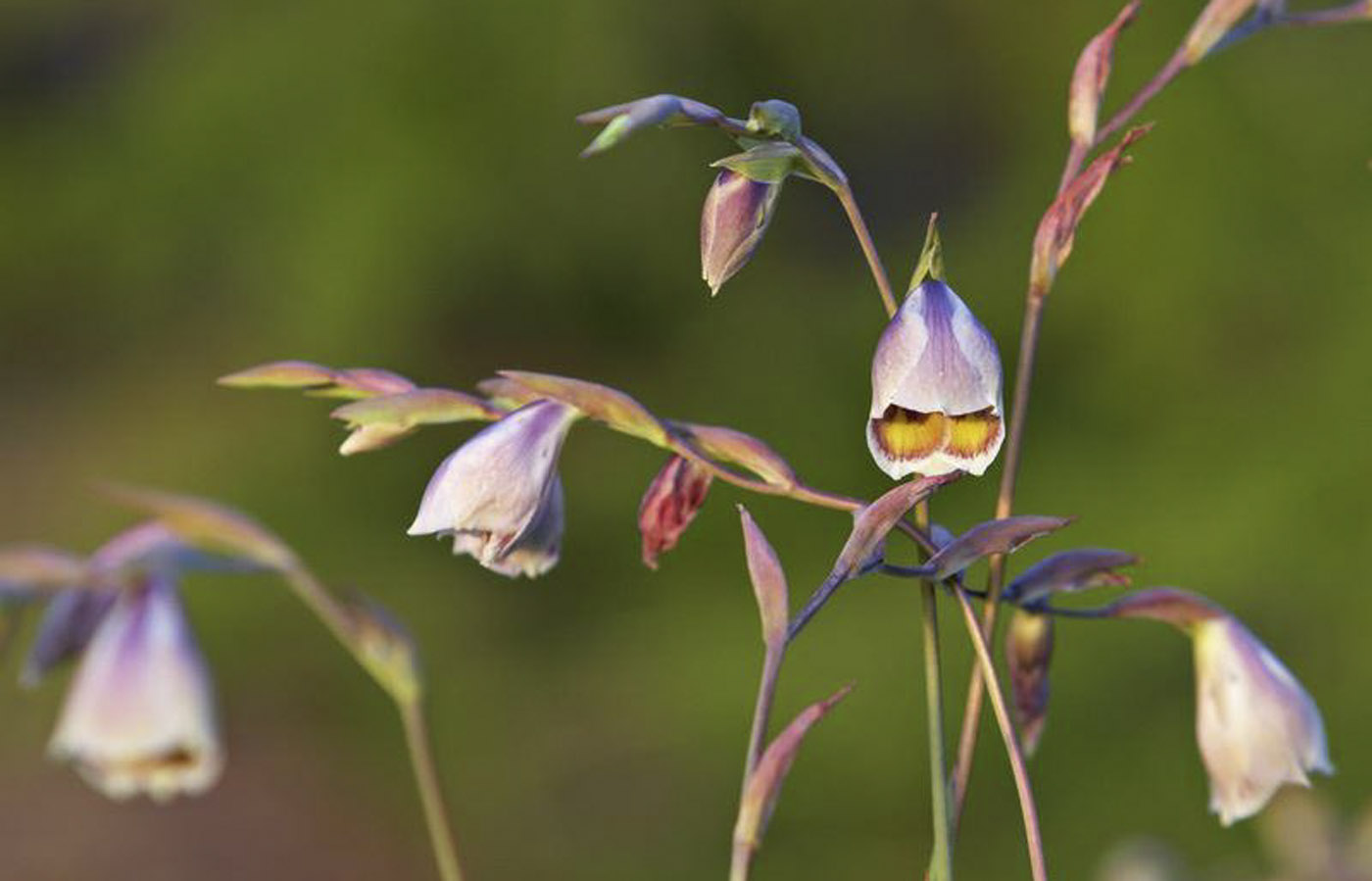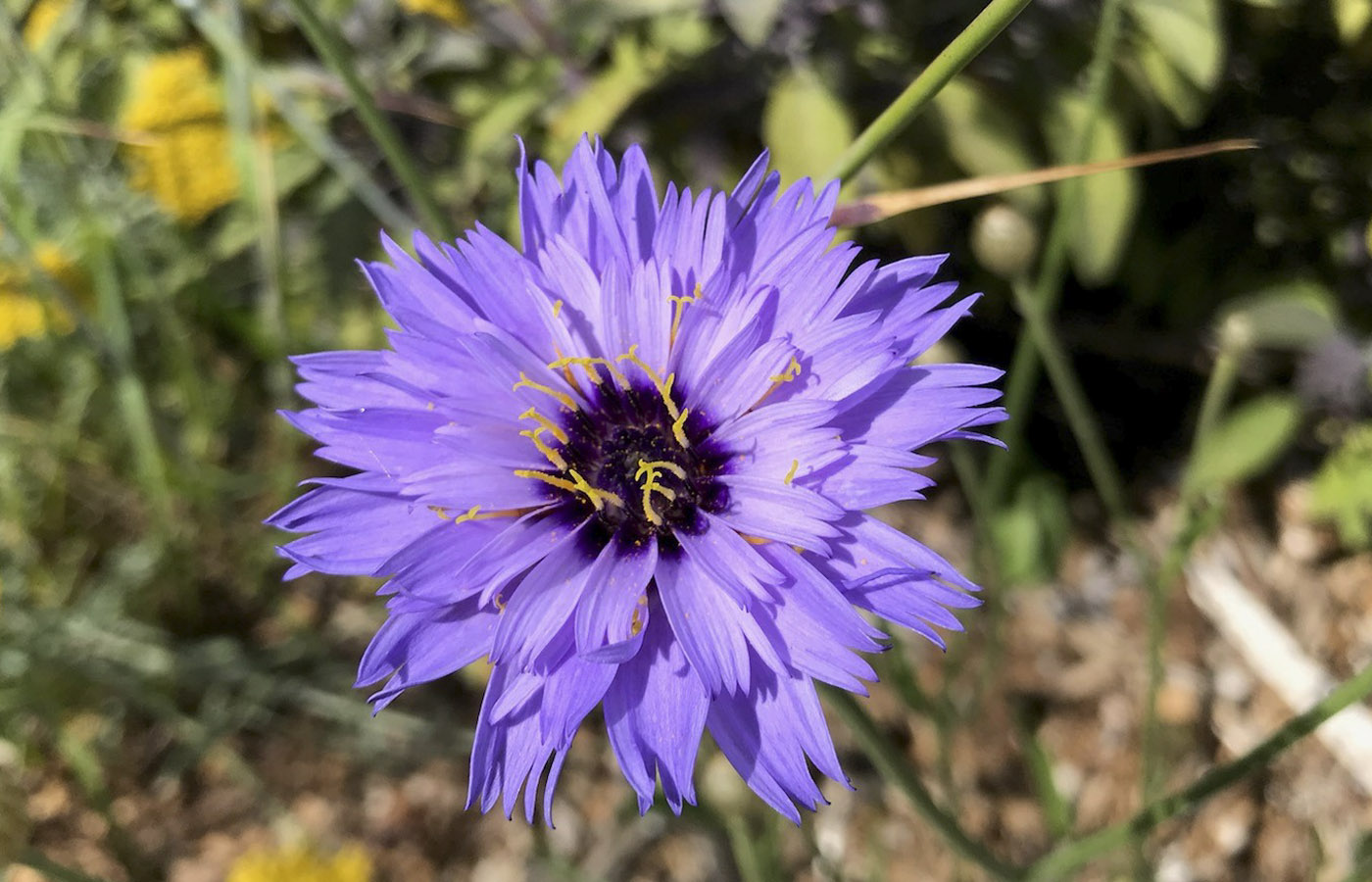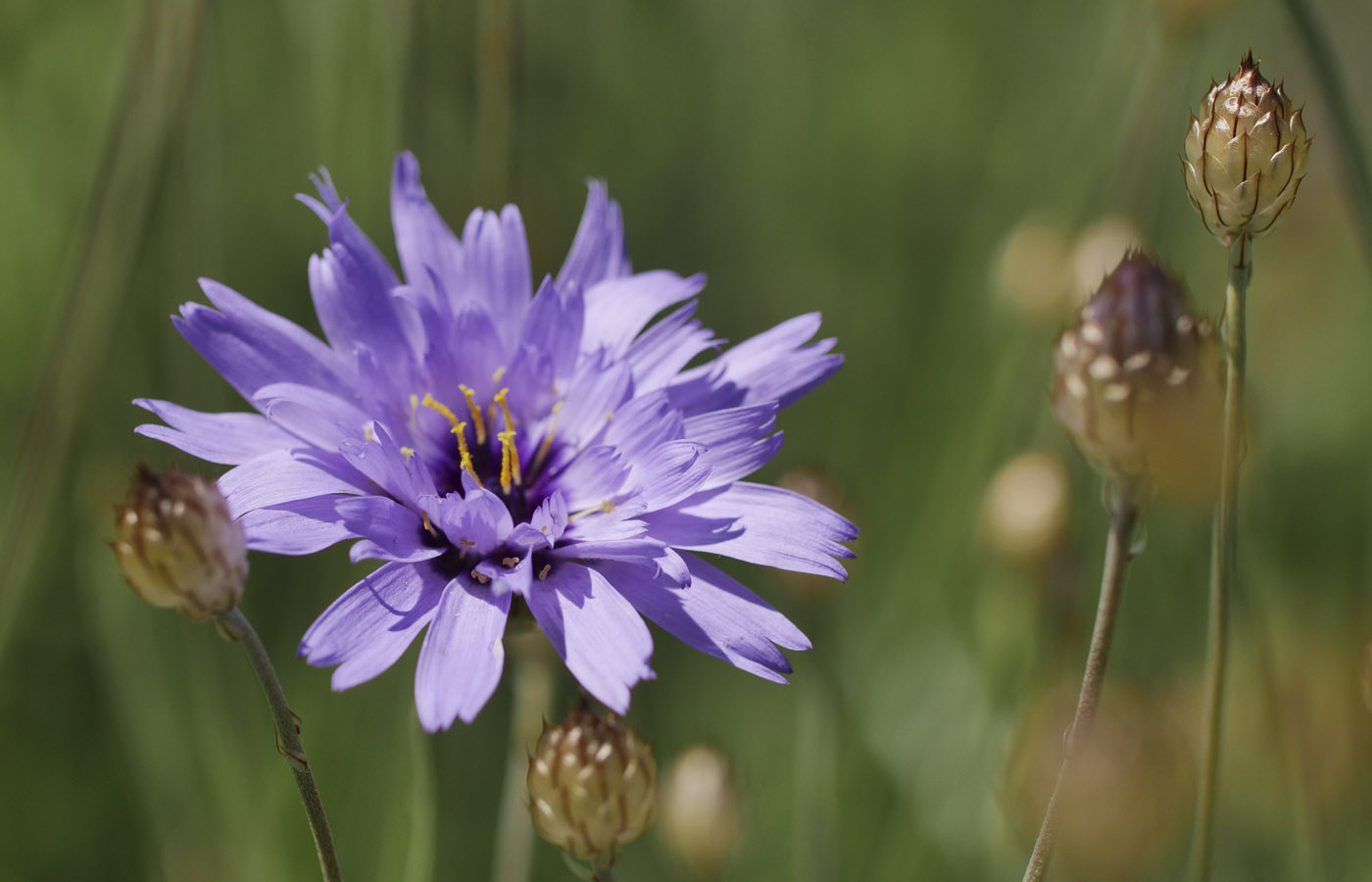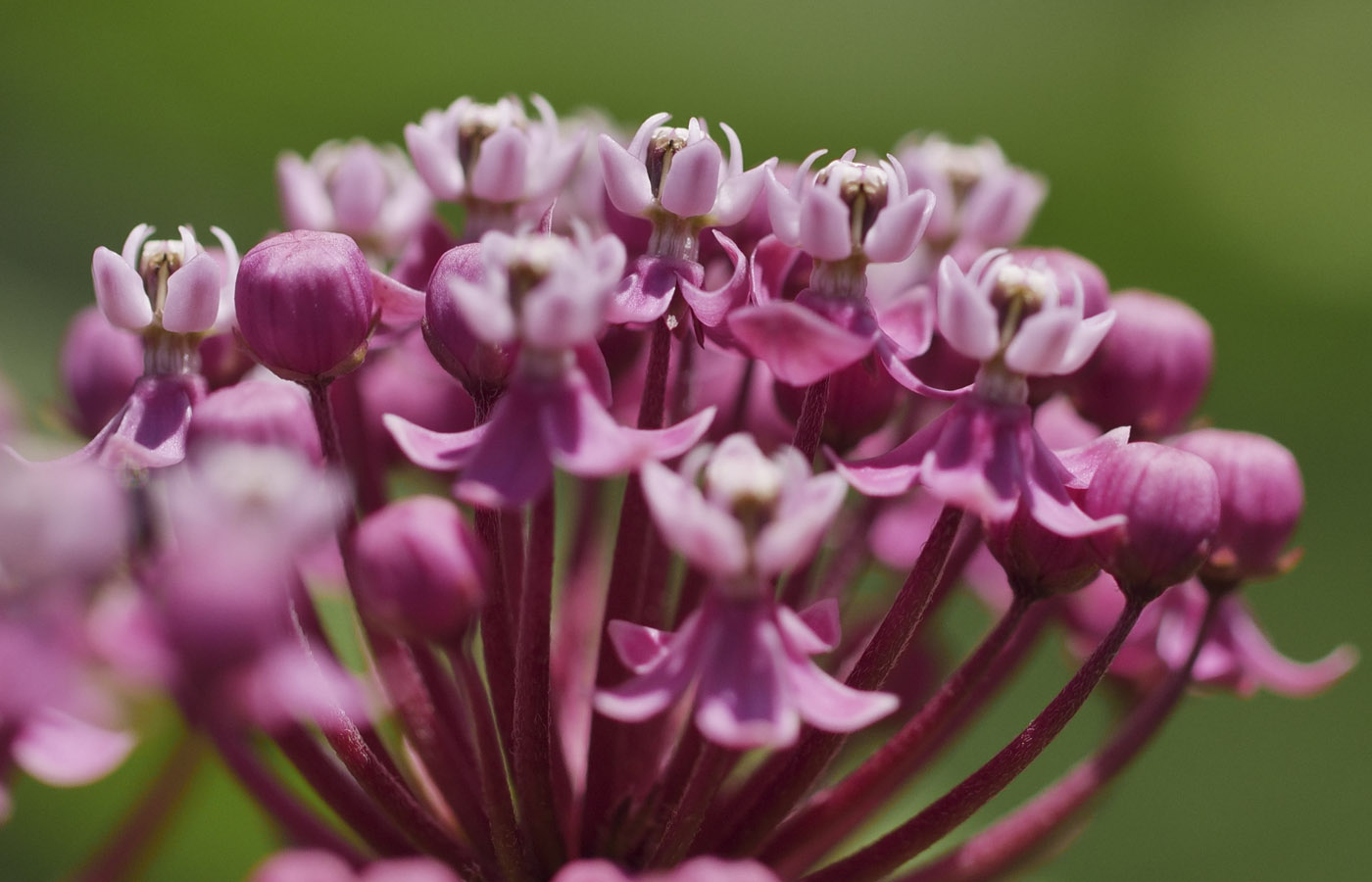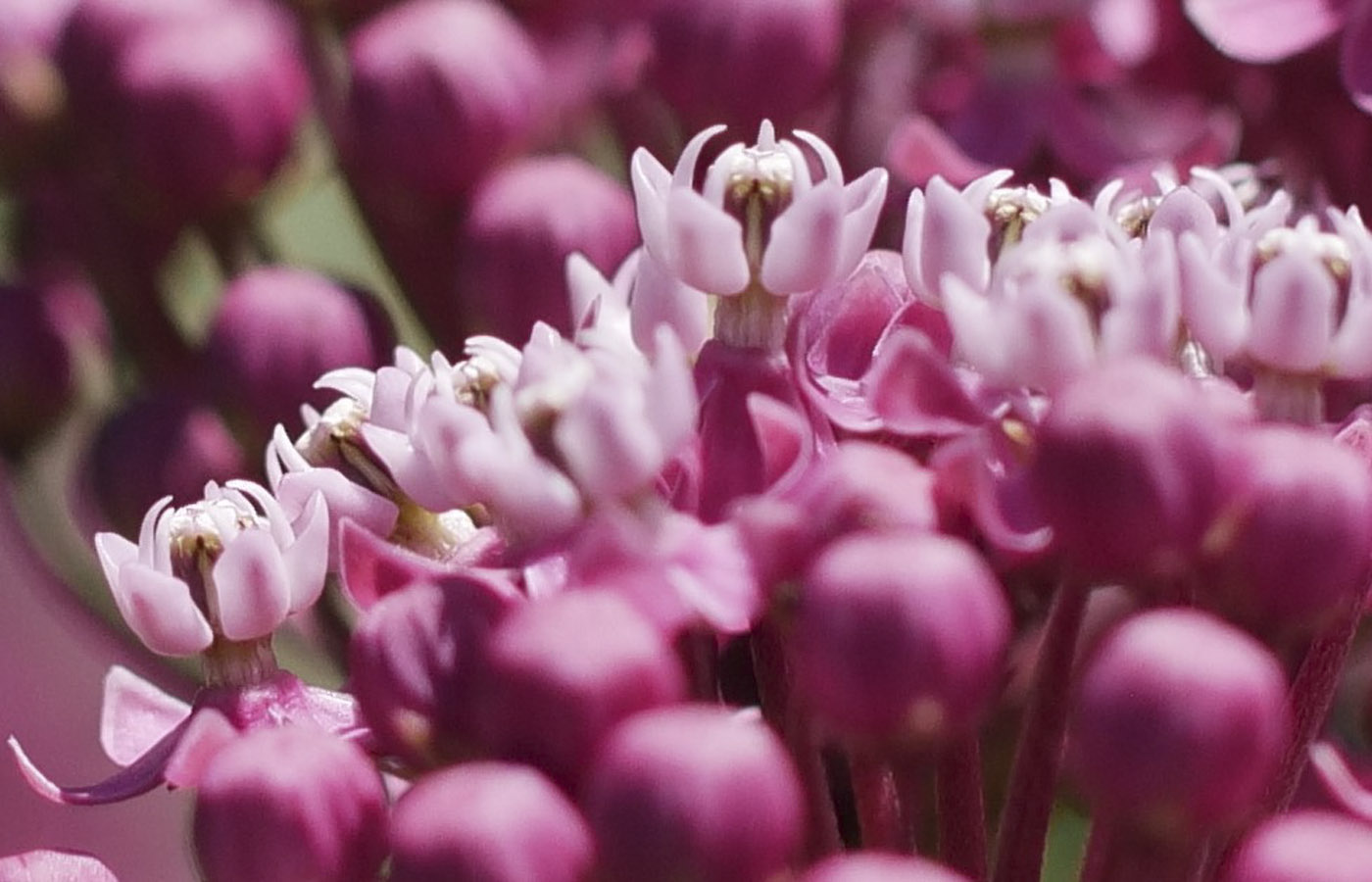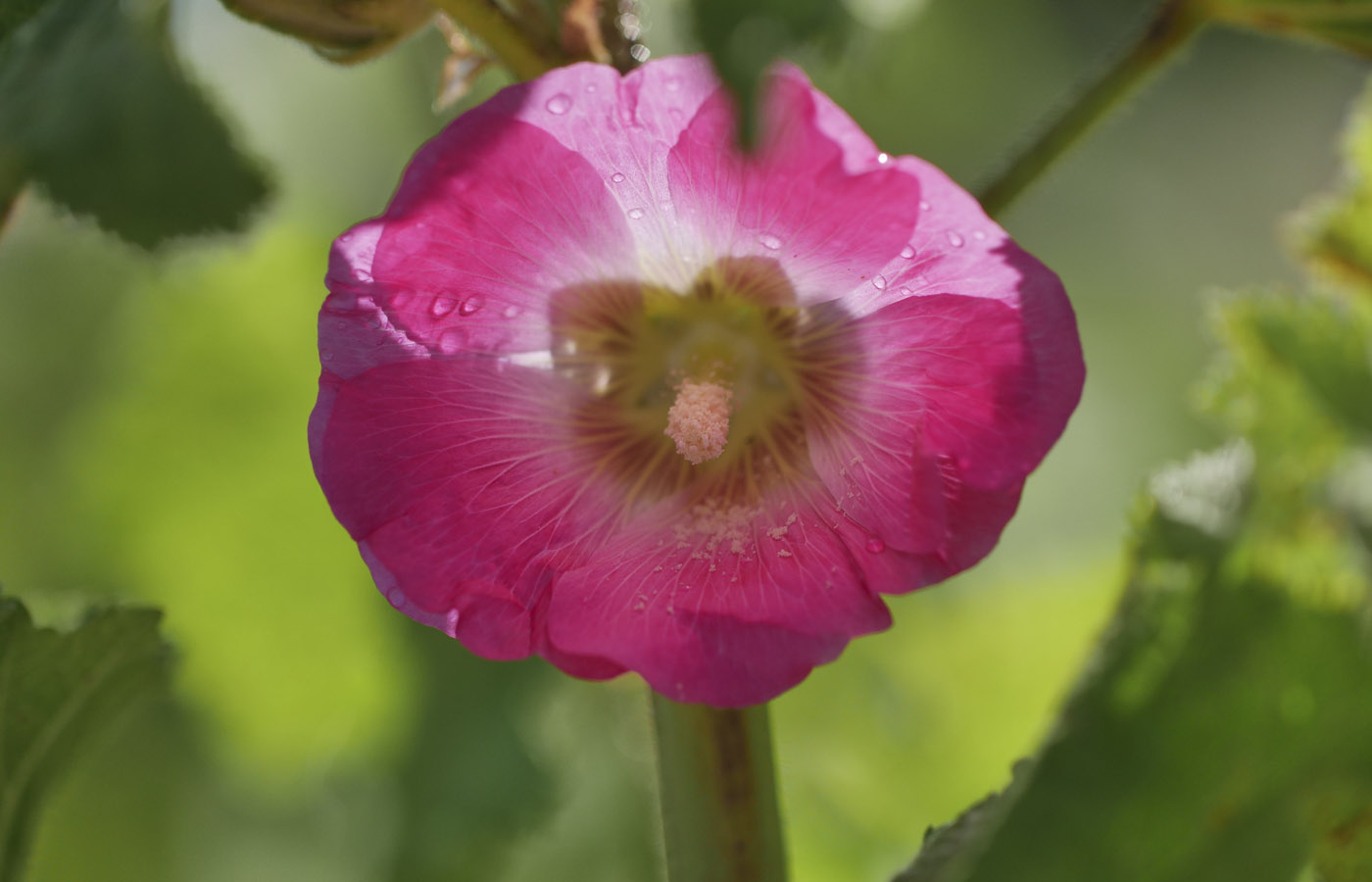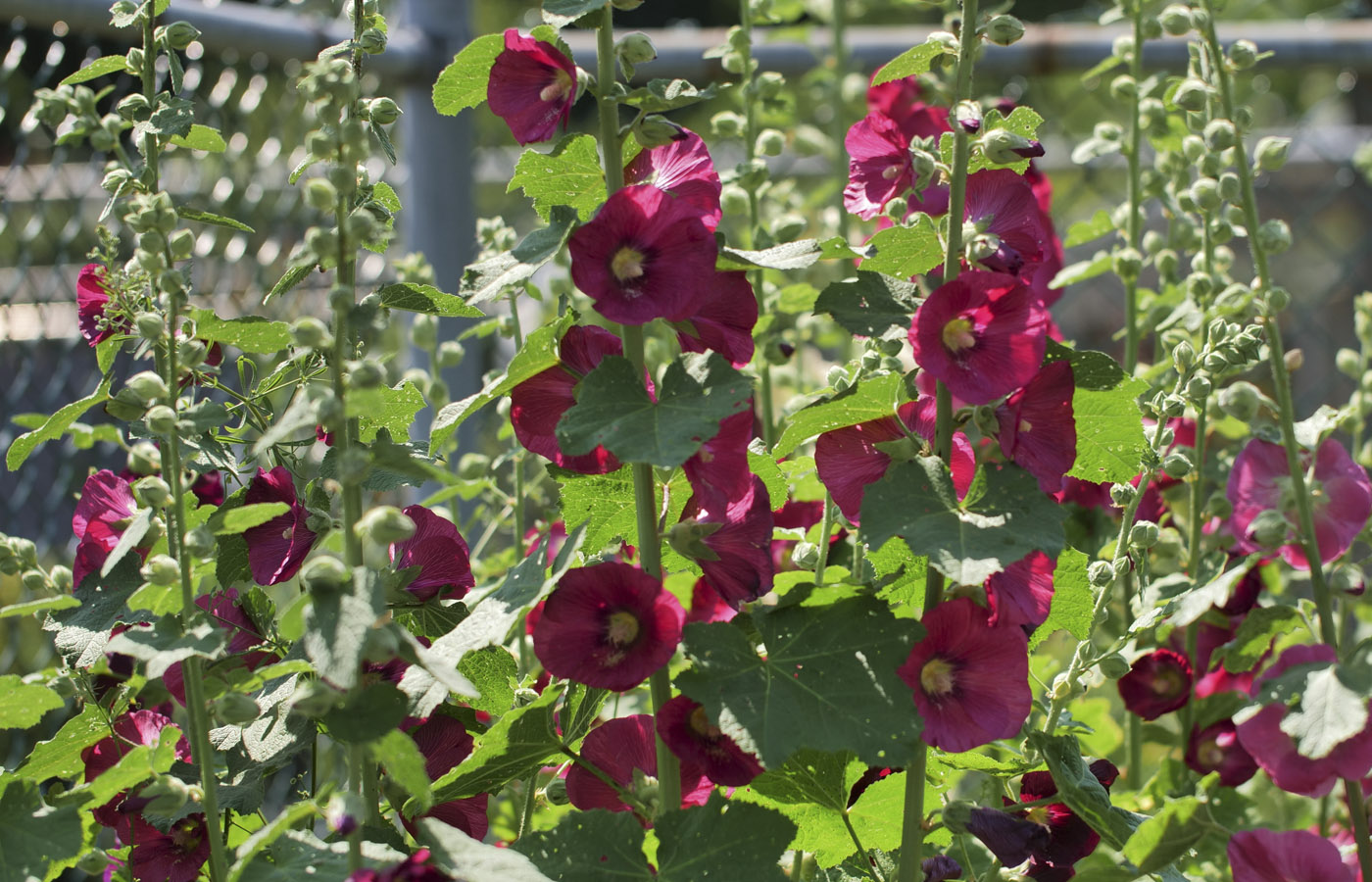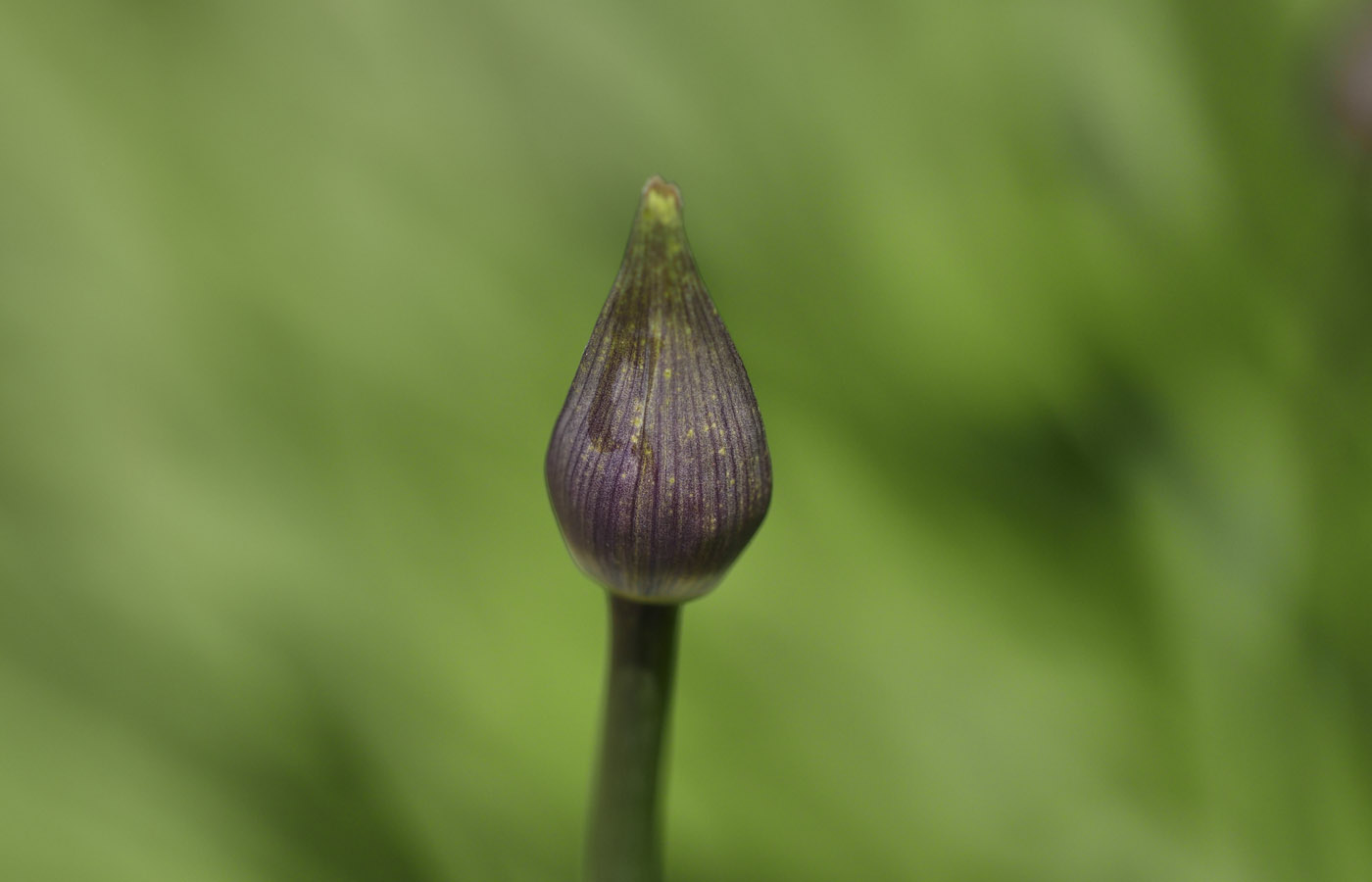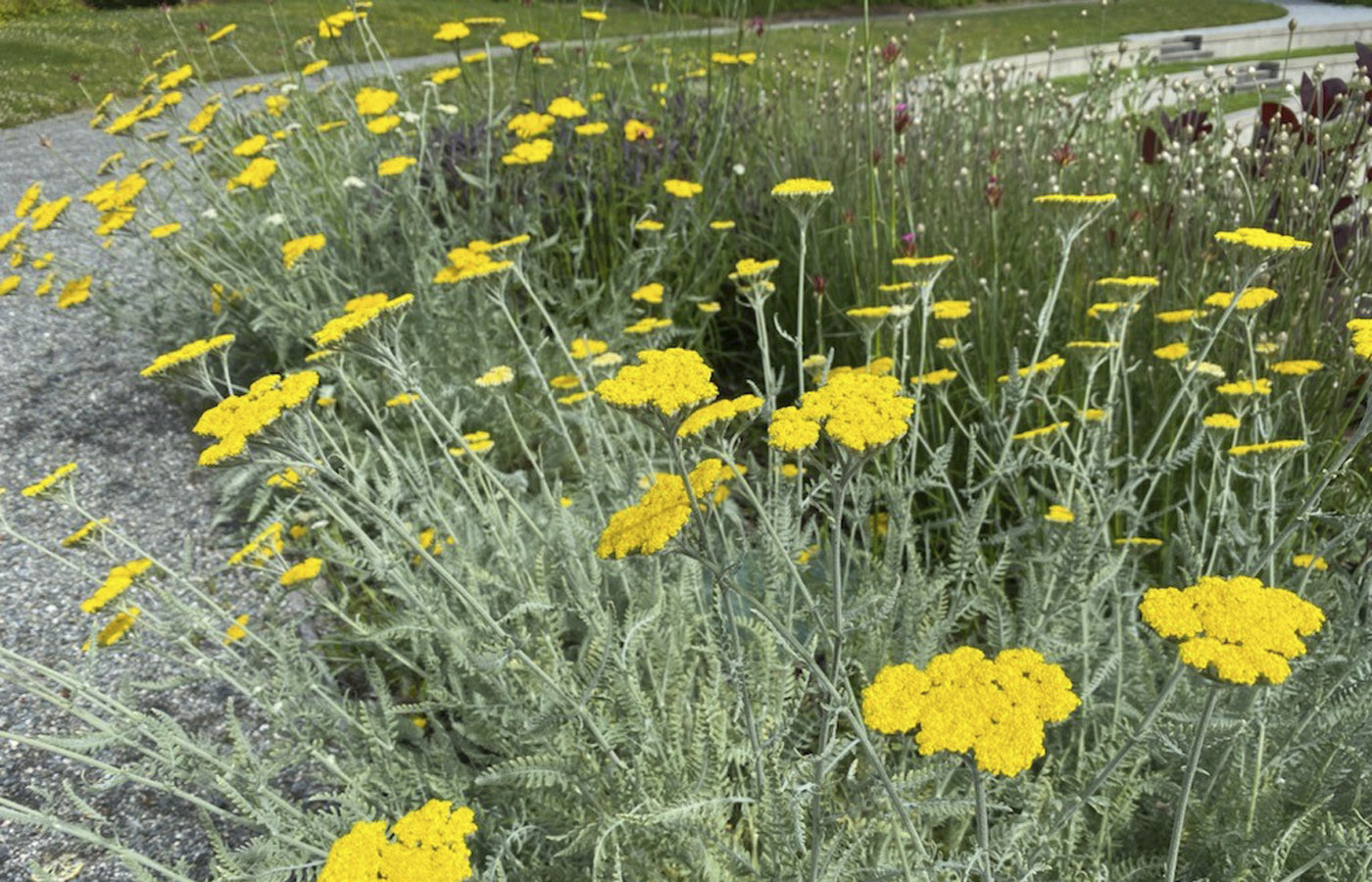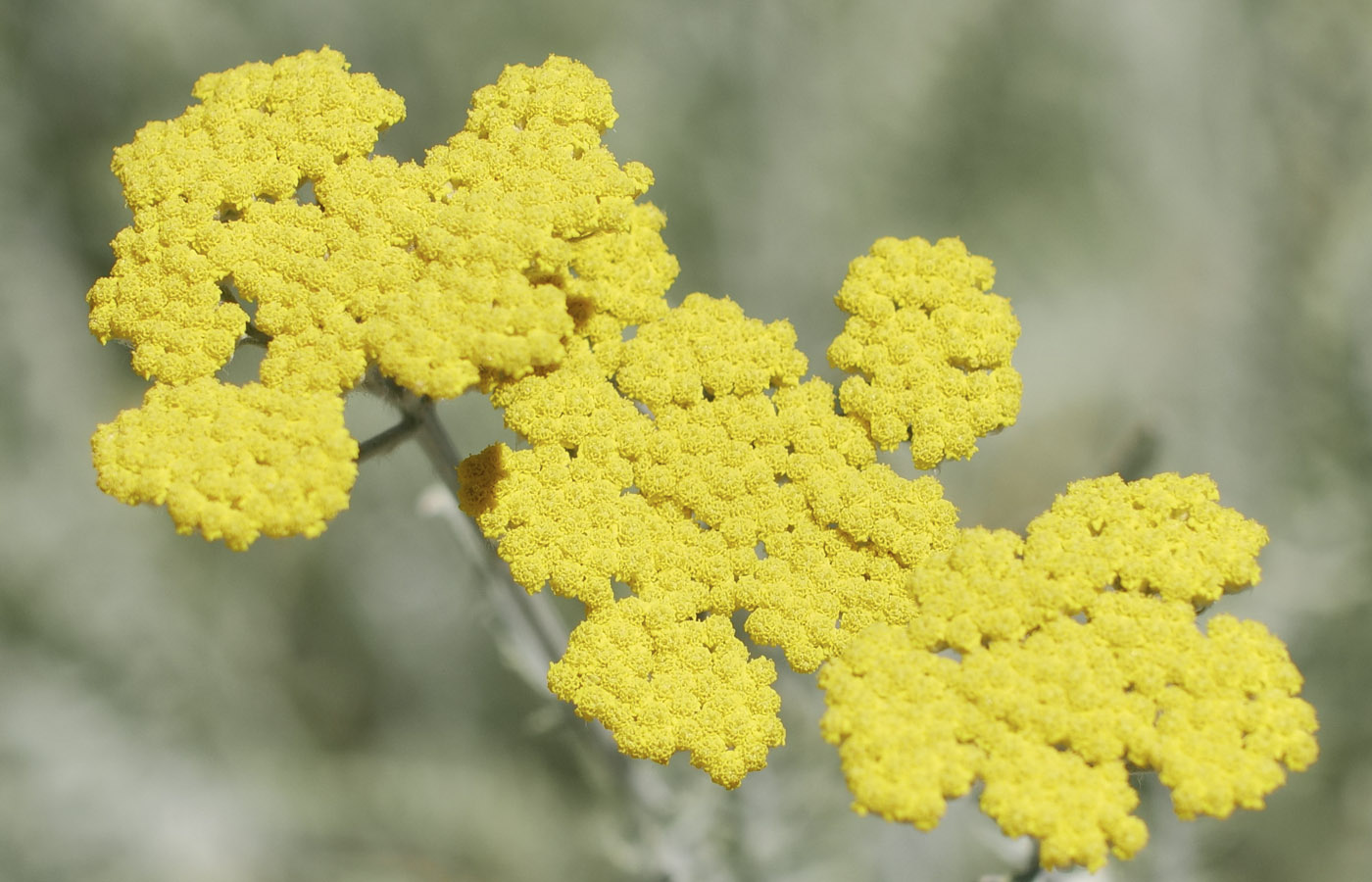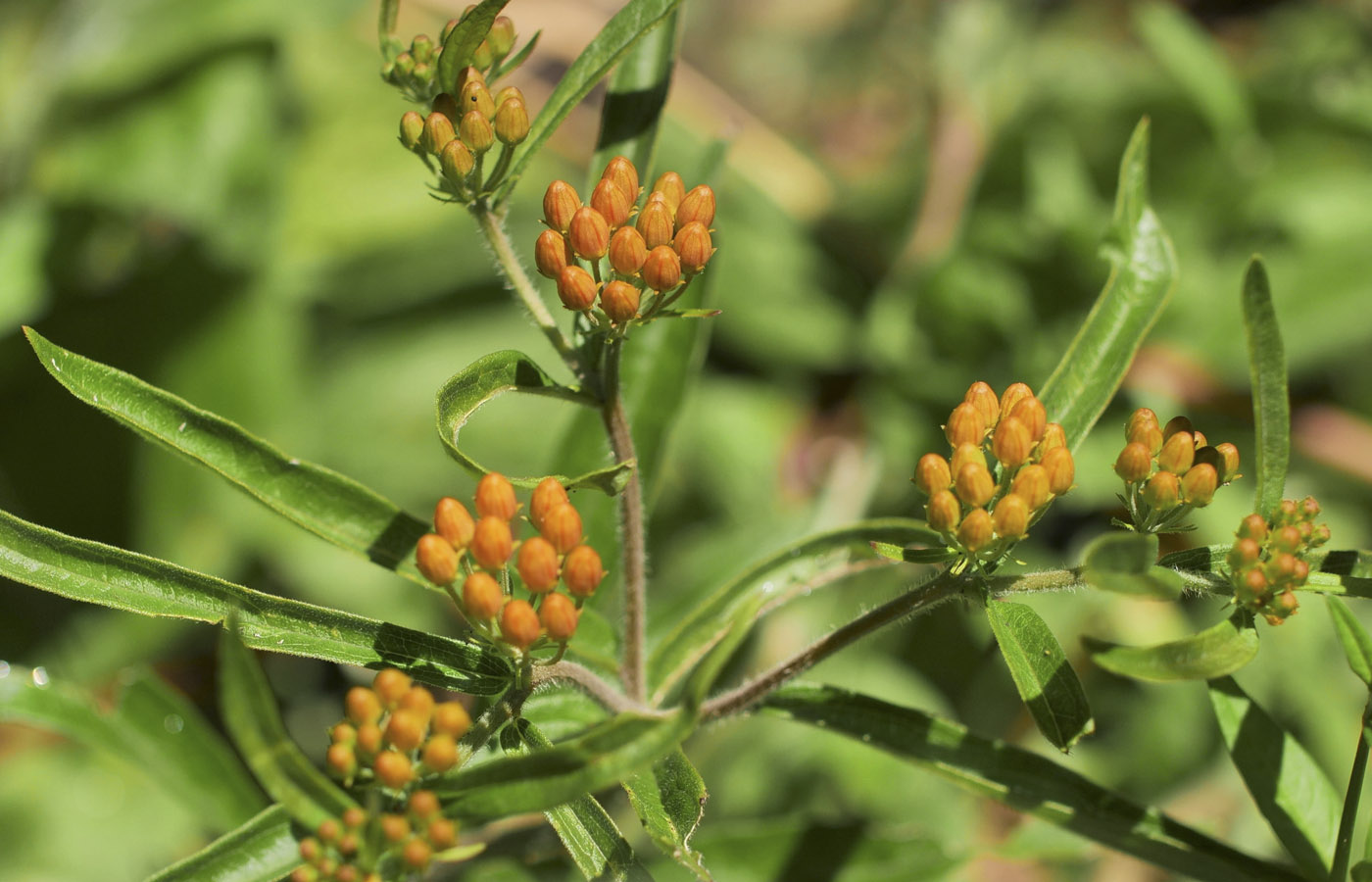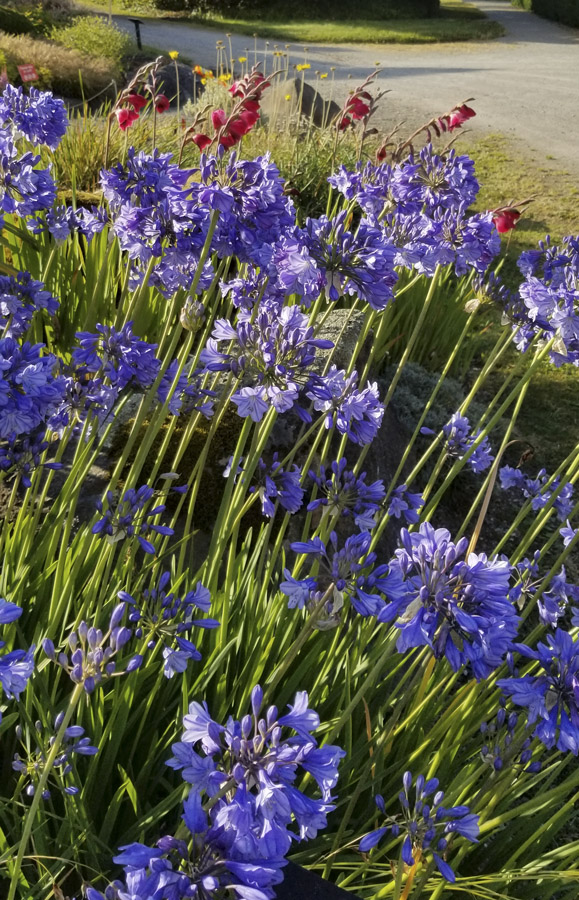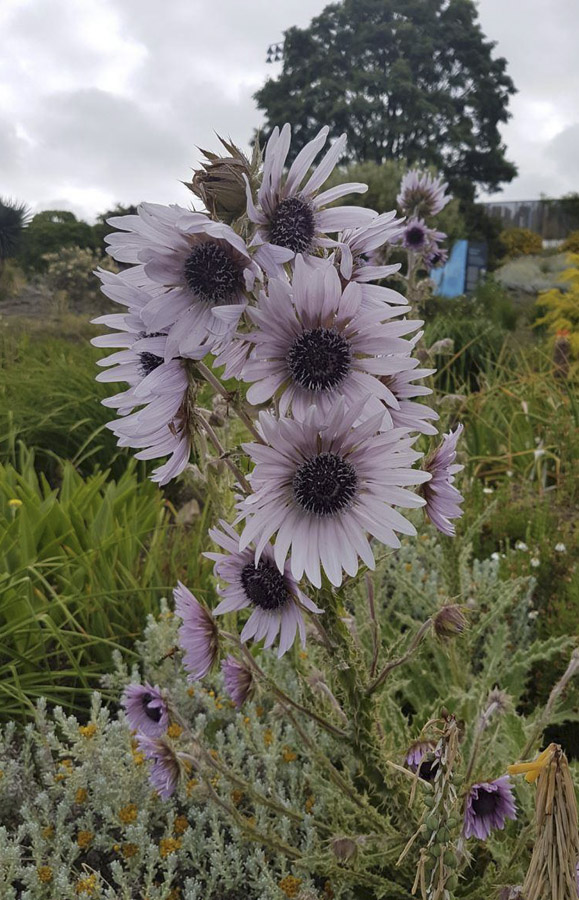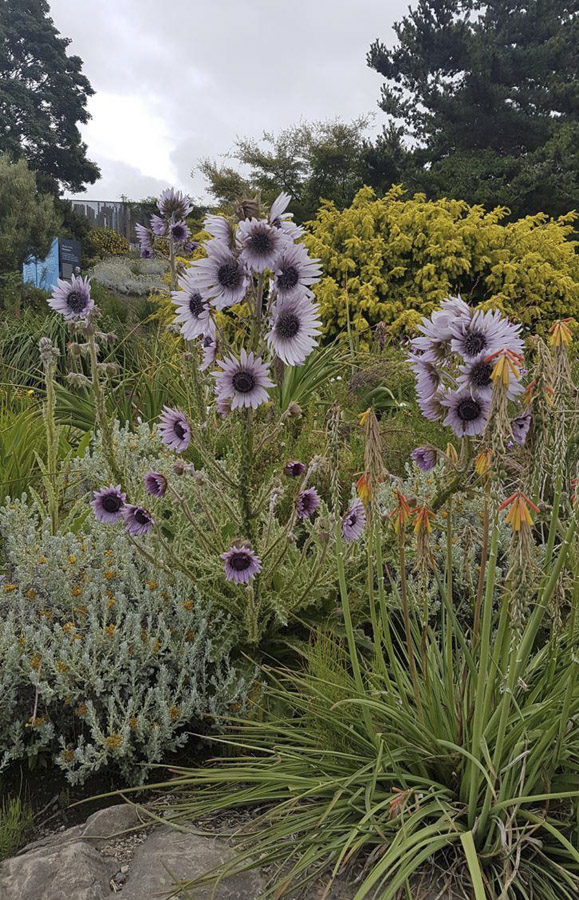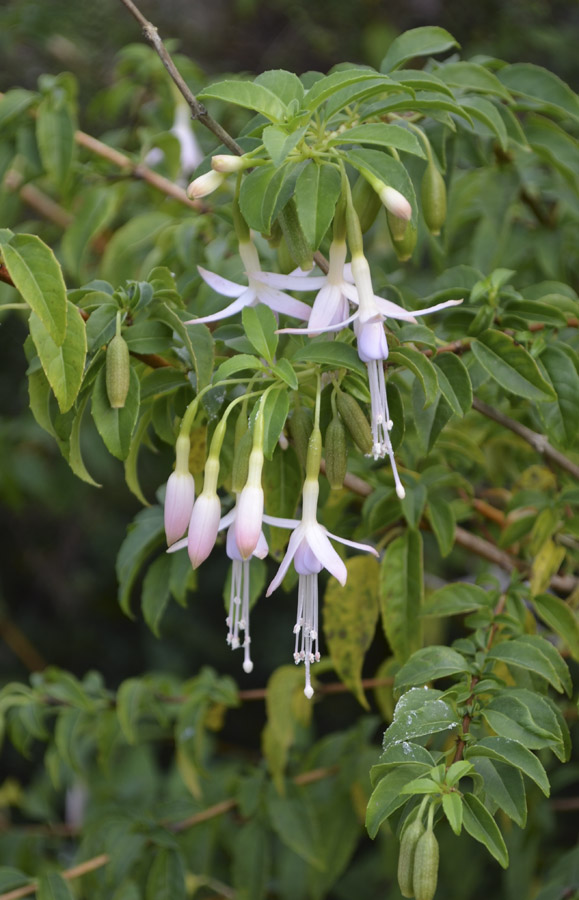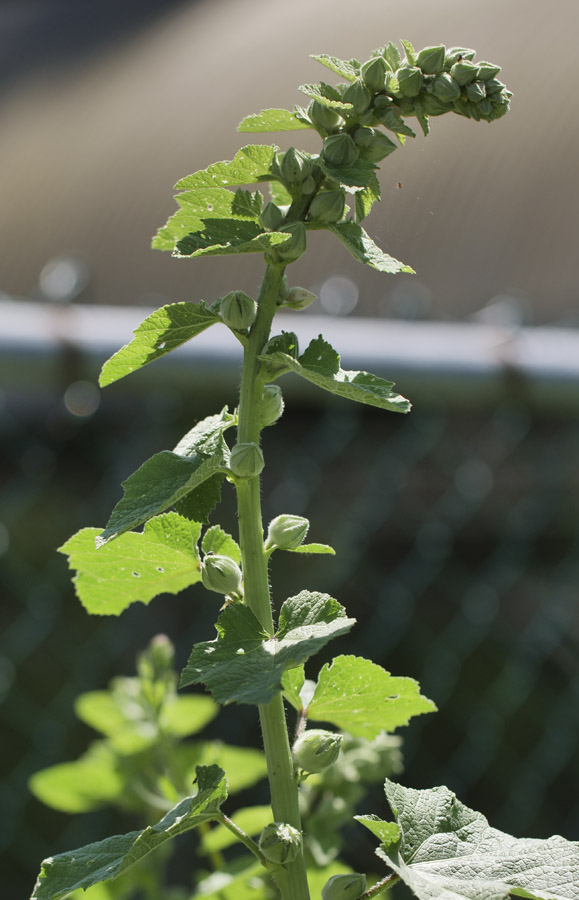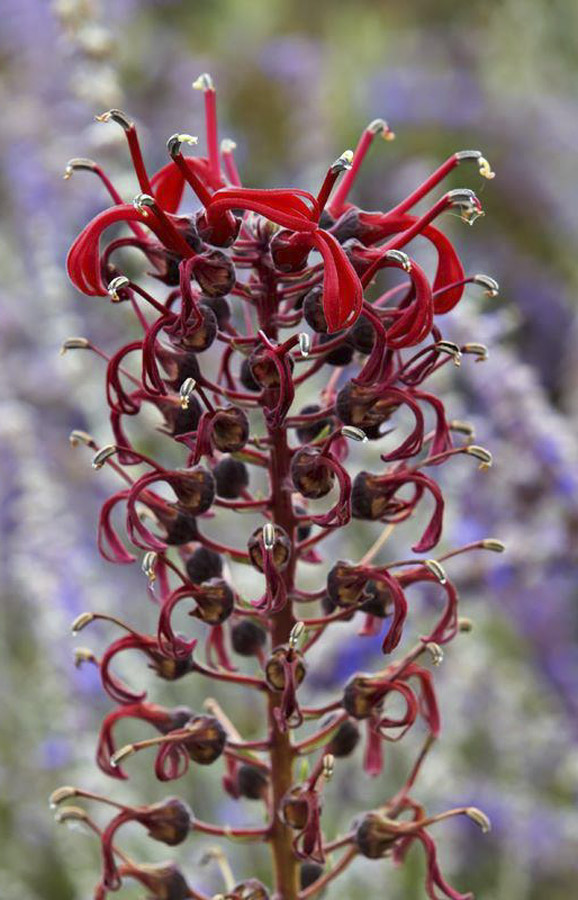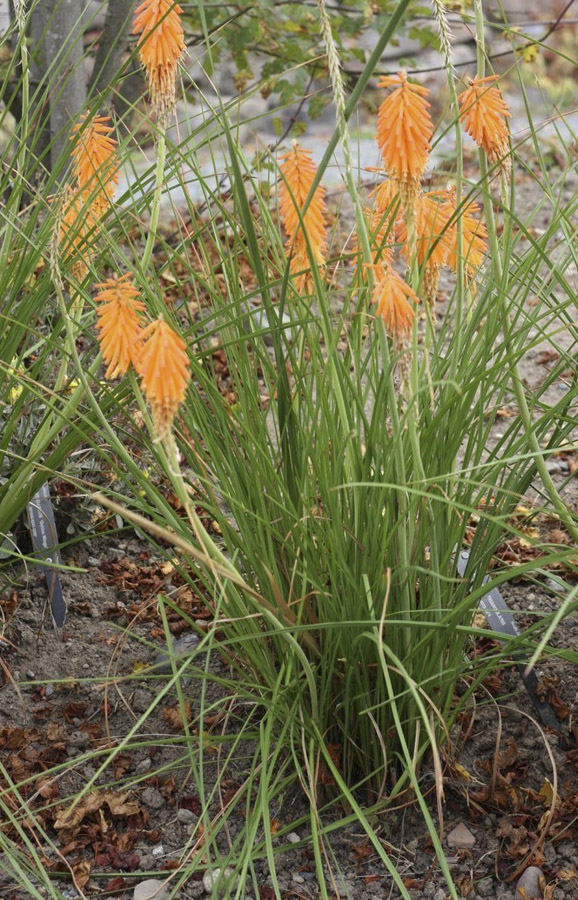For a self-guided tour, use Garden Explorer to locate plants featured in this month’s post. Select a tour in the drop-down menu.
Writing this in June, which temperature-wise has been somewhat of a rollercoaster, I am definitely looking forward to an improvement in the weather. We can generally count on warmer, drier, and more predictably consistent conditions in July. That will come with some relief after the meteorological turbulence that was June. We’re all anticipating better times ahead.
July in UBC Botanical Garden is mostly about colour. Much as I like to encourage visitors to look beyond the flowers, the early summertime is a period of floral bounty. It is worth celebrating for that alone.
One of the areas of the Garden developing a distinctive perennial flavour (read: more flowers) is the space surrounding the Roseline Sturdy Amphitheatre. Horticulturist Tim Chipchar has been working hard over the last few years to turn what was, in places, an overgrown space into an exciting display of unusual trees, shrubs and exotic perennials.
The daisy family, Asteraceae, figures highly in summer-flowering plants, but this huge family has plenty of non-daisy flowers to show. A few of Tim’s asteraceous offerings for July include the deliciously aromatic, yellow-tansy-flowered, Tanacetum balsamita (costmary)–a noted European medicinal herb popular in the Middle Ages–and the softer, yellow-flowered, downy-leaved Achillea clypeolata (Balkan yarrow). Also known as moonlight yarrow, this species pairs its flattened clusters of soft yellow flowers with silvery-grey, ferny foliage.
Catananche caerulea is a sprawling perennial with the evocative common name “cupid’s dart” (it is supposed to have been used in love potions in ancient Greece). Cupid’s dart flowers are blue, although shades of white-pink, pink, and purple are also popular. Santolina etrusca (Etruscan cotton lavender) is a typical cotton lavender, with its aromatic subshrub, ferny foliage, cottony hairs on the stems (hence, cotton lavender) and tansy-like “button” flowerheads. Named for historic Etruria in northern Italy, now Tuscany, this species bears buttons that are soft yellow, much like the heads of Balkan yarrow. And like the yarrow, the flowers of cotton lavender are somewhat musty-smelling, and more easily appreciated upwind.
The E.H. Lohbrunner Alpine Garden has its share of in-bloom cotton lavenders in the Europe section, but the major attractions in the Alpine Garden are arguably in the Africa and South America sections. In the South American section, Lobelia tupa (devil’s tobacco) holds court at a high point in the garden. The American lobelias are exceptional plants for their attractiveness to hummingbirds, and the rich crimson red of this species’ blooms is a magnet for Garden visitors, as well.
Fuchsias, too, have significant appeal both for humans and our winged friends. There are several around the corner from the lobelia. The common Fuchsia magellanica (hardy fuchsia) has slender upright stems and slim purple and pink flowers. The lovely palest-pink-flowered fuchsia (labelled F. magellanica) in the same area is likely a hybrid as well–note the strongly recurved sepals, a feature indicating that this is not the pure species. Heading higher to the fence line trail, look for several selections of Clematis viticella (or Viticella Group hybrids) growing on the chain-link. This species is noted for its smallish, flat-opening flowers in a range of saturated hues.
In the African section, look out for the always delightfully fearsome thistle, Berkheya purpurea (purple burkheya or Zulu warrior) and nearby, Kniphofia triangularis subsp. obtusiloba (mandarin torch lily). This Kniphofia is unusual, both for its small size, but especially for its startling monochrome, vermillion-orange flowers.
Throughout the African section are several kinds of summer-flowering bulbs, including a few Gladiolus (sword lilies). Both the long-blooming Gladiolus papilio (butterfly sword lily) and its hybrid, the sumptuous Gladiolus ‘Ruby’ (red sword lily), with its rich, velvety-red, cup-shaped flowers, are worth a closer look. Agapanthus (African lily) belong in the daffodil family, Amaryllidaceae. They look like they could be bulbs, with their strap-shaped basal leaves and onion-like inflorescences, but they are herbaceous perennials. Flowers are typically blue and range from pale to darker, more brooding shades. In the Alpine Garden they are a wonderful counterpoint to the razzamatazz around them.
More Agapanthus are planted at the Botanical Garden entrance. Here you can see plants of ‘Headbourne Hybrids’, a seed strain with dark blue flowers, and the cultivar ‘Cherry Holley’, which has striped white and lavender flowers. A significant show of Alcea rosea (hollyhocks) greets visitors at the pedestrian gate. These produce 3-m-tall spikes of opulent flowers in reds, pinks and yellows throughout the summer. Look for them on the west side of the Reception Centre, too.
The pink flowers of Asclepias incarnata (swamp milkweed) in the Traffic Circle are almost too vibrant to believe. They would attract monarch butterflies—which, famously, lay their eggs on milkweeds—in the unlikely event that any were to happen this way. Like the hollyhocks and African lilies, they are also visited by bees.
This is but a tiny taste of what’s in store in July. I don’t think I’m wrong in saying that parts of the garden have never looked better. This year I won’t need to encourage people to visit, but they may need to book early.
Submitted by: Douglas Justice, Associate Director, Horticulture and Collections
- Tanacetum balsamita Photo by Adriana Lopez-Villalobos, Curatorial Coordinator.
- Tanacetum balsamita Photo by Adriana Lopez-Villalobos, Curatorial Coordinator.
- Tanacetum balsamita Photo by Adriana Lopez-Villalobos, Curatorial Coordinator.
- Santolina etrusca Photo by Adriana Lopez-Villalobos, Curatorial Coordinator.
- Santolina etrusca Photo by Adriana Lopez-Villalobos, Curatorial Coordinator.
- Santolina etrusca Photo by Adriana Lopez-Villalobos, Curatorial Coordinator.
- Asclepias incarnata Photo by Adriana Lopez-Villalobos, Curatorial Coordinator.
- Lobelia tupa
- Kniphofia triangularis subsp. obtusiloba
- Santolina etrusca Photo by Adriana Lopez-Villalobos, Curatorial Coordinator.
- Gladiolus ‘Ruby’ Photo by Laura Caddy, E. H. Lohbrunner Alpine Garden.
- Gladiolus papilio
- Gladiolus papilio
- Catananche caerulea Photo by Tim Chipchar, Horticulturist
- Catananche caerulea Photo by Adriana Lopez-Villalobos, Curatorial Coordinator.
- Asclepias incarnata Photo by Adriana Lopez-Villalobos, Curatorial Coordinator.
- Asclepias incarnata Photo by Adriana Lopez-Villalobos, Curatorial Coordinator.
- Asclepias incarnata Photo by Adriana Lopez-Villalobos, Curatorial Coordinator.
- Asclepias incarnata Photo by Adriana Lopez-Villalobos, Curatorial Coordinator.
- Alcea rosea Photo by Adriana Lopez-Villalobos, Curatorial Coordinator.
- Alcea rosea Photo by Adriana Lopez-Villalobos, Curatorial Coordinator.
- Agapanthus
- Achillea clypeolata Photo by Tim Chipchar, Horticulturist.
- Achillea clypeolata Photo by Adriana Lopez-Villalobos, Curatorial Coordinator.
- Achillea clypeolata Photo by Adriana Lopez-Villalobos, Curatorial Coordinator.
- Asclepias tuberosa Photo by Adriana Lopez-Villalobos, Curatorial Coordinator.
- Agapanthus
- Berkheya purpurea
- Berkheya purpurea
- Fuchsia magellanica Photo by Laura Caddy, Curator, E. H. Lohbrunner Alpine Garden
- Alcea rosea Photo by Adriana Lopez-Villalobos, Curatorial Coordinator.
- Lobelia tupa
- Kniphofia triangularis subsp. obtusiloba
- Clematis viticella Photo by Laura Caddy, Curator, E. H. Lohbrunner Alpine Garden.

